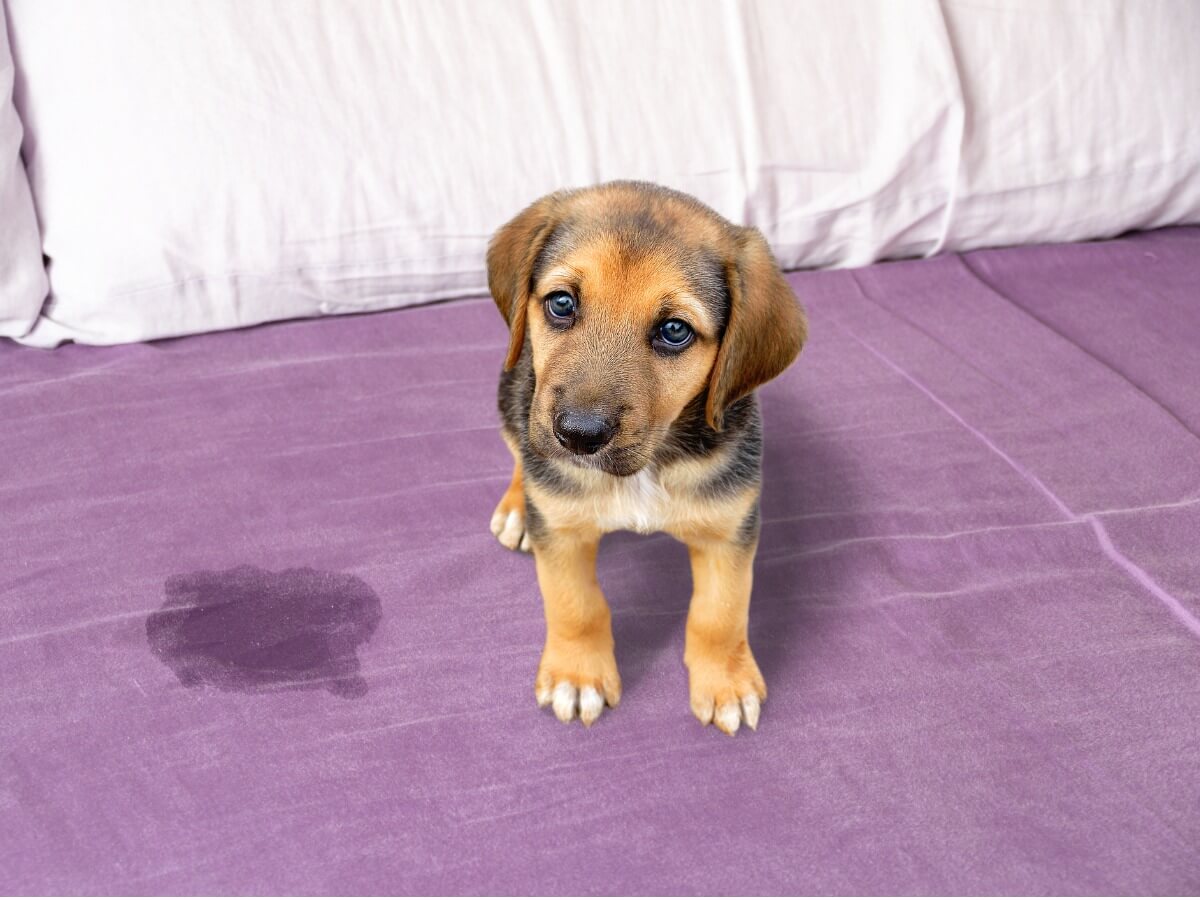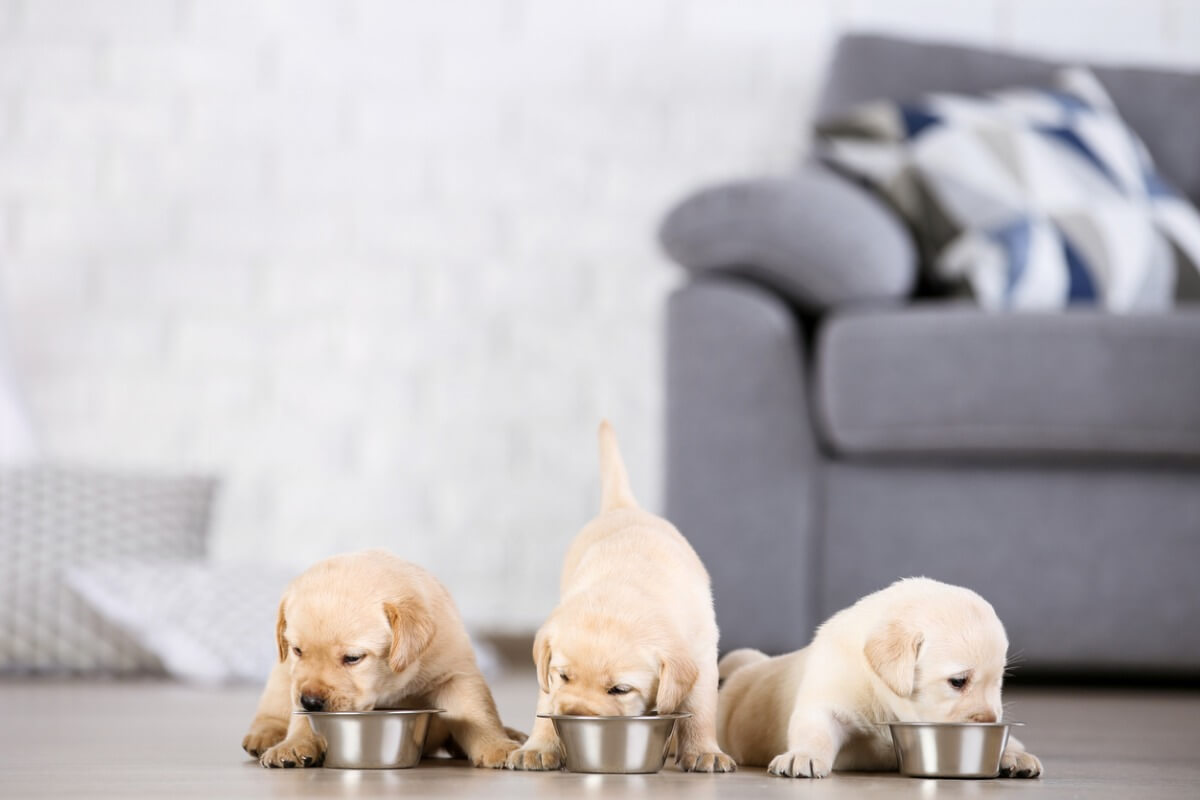8 Things a Puppy Should Learn in its First Year


Reviewed and approved by the biologist Samuel Sanchez
The things a puppy should learn in its first year of life form a fundamental part of its future behavior. At this stage, the puppy will have a high level of energy and the owner will have to control it and teach them to behave, socialize, and learn tricks, among other things.
Before delving into everything a puppy should learn, it’s important to emphasize that adopting a dog involves taking on responsibilities that go beyond simply providing shelter and food. Dogs are so intelligent that they have been used as rescuers and animals for emotional support for many years. Because of this, your love and positive stimulation are a must.
8 things a puppy should learn in its first year
There are many things a puppy should learn during its first year of life. However, in this article, we’re going to go into 8 aspects that will help your dog to get along much better with you, other people, and other dogs. Take note of them and invest quality time in training your little puppy.
1. Recognizing its name
The puppy needs to learn to recognize its name in its first few months of life. Although, to us, this sounds like a simple process, it isn’t so for the dog, and it may take it a few days or weeks to learn it.
The owner should take the time to repeat the dog’s name over and over again while calling them or carrying out actions to attract the dog’s attention. This is the easiest way for them to relate concepts. In addition to recognizing its own name, the idea is that your puppy should learn to respond to your call.
It’s recommended that you make eye contact with the puppy while calling their name and give them a reward that they really like. This action should be repeated several times, in different contexts, to ensure that the animal has learned it and will be able to respond to it at all times.

2. Doing its business in a specific place
In its first year, the puppy has to learn to do its “business” in a specific place and at a certain time. However, this task should be divided into 2 phases. The first will be executed in the first 4 to 6 months of life, which is when the dog still can’t control its sphincters well.
At this stage, you’ll need to rely on the use of newspaper or absorbent mats, although getting your puppy to use these resources is simple. Usually, the dog will feel the urge to relieve itself about 30 minutes after eating. Allow for this, and take them to an area that you’ve set aside for it. Little by little, they’ll start to go by themselves.
When they’re six months old, your puppy can learn to relieve himself outside. To achieve this, start with walks every hour and increase the time outdoors until you establish the final routine: walks at least twice a day.
3. Socializing
As supported by research, dogs have a great social instinct that develops best if they’re with their mother and siblings during the first few months of life. Hence the importance of puppies not being separated from their family before they’re 2 months of age. However, this process of socialization should continue with the owner indefinitely.
Once the puppy is vaccinated and is authorized by the veterinarian to go outside, it’s important for the owner to let them interact with other dogs, especially when they’re the only one at home. Just like humans, canines need to socialize with their fellow species.
Likewise, the process should include visiting safe public places for the dog, which will prevent them from being scared when going into the outside world.
4. They must learn to follow your orders
When a dog doesn’t follow its owner’s calls, we can suppose that there was a failure in communication during the first stages of life. They simply must learn this aspect of obedience in order for you to be able to take your dog to a park or any open area with confidence. In that way, you’ll be sure that they will always come to your side when you want them to.
Reinforce this training with snacks or toys at home first, before you venture outside. Likewise, reinforce commands such as stop, sit or quiet until the pet complies in all cases.
5. Being alone
Scientific articles explain that separation anxiety is a state that causes behavioral responses in the dog that are related to fear. This problem is very common in male, orphaned, and abandoned dogs. There are multiple reasons why a dog can develop this psychological pathology.
Puppies can experience it when they first leave their mother’s bed, as they have to face a new place where they won’t have the protection of their pack. It is, therefore, vital for your puppy to learn to be alone in their first year of life.
A good solution is to keep the puppy in a playpen while you do your activities, so that they are alone, but feel safe. You can gradually extend this interval, but keep in mind that every dog also requires attention from their guardian.
6. Learning to bond
The puppy should learn to develop positive bonding skills throughout their first year of life. The owner needs to teach them that they can trust you and feel safe with you.
This is important, because it also teaches them that they can trust humans in general, which improves their socialization skills. In this way, the dog won’t act aggressively when a person other than you approaches them or tries to greet them.
7. No impulsive biting
In their first months of life, the puppy will play and bite impulsively. In this case, the owner should teach the dog to stop carrying this behavior that can hurt people. However, the idea is not to stop the dog from biting, as this is natural and healthy behavior for the correct development of its teeth.
The puppy must be taught not to bite aggressively. When this happens, you should say “no” to them, or give them the command to stop. One handy little trick is to pretend to cry every time the dog bites you. In that way, they’ll recognize that this action causes pain and they should stop doing it.
8. They must learn to travel with you
If you often go out in your car, it’s a good idea to ensure that your puppy can learn to travel with you in its first year of life. This will stop your puppy from getting dizzy, vomiting, or stressing out when you put them in the car without much preparation.
Start this adaptation with short rides (and close to home) and gradually increase the distance. Remember to take food, water and never leave the dog alone and locked in the car, as this could cause them serious harm or even death.

Your puppy can learn a lot in its first year
We’ve shown you 8 things that the puppy can and should learn in its first year of life, but this doesn’t mean that there aren’t plenty of other tips. Take advantage of the time you’re at home to teach them special tricks and behavior. At this age, puppies are at a good age to train them for emotional support work, rescue work, or competitions.
All cited sources were thoroughly reviewed by our team to ensure their quality, reliability, currency, and validity. The bibliography of this article was considered reliable and of academic or scientific accuracy.
- Miloco, S., Dragonetti, A. Comportamiento normal y ontogenia de la conducta en caninos. Suplemento técnico veterinario. Revista del colegio 34.
- RE Menrzel. Fisiopatología, diagnóstico y tratamiento de la ansiedad por separación en el perro. AVEPA.
This text is provided for informational purposes only and does not replace consultation with a professional. If in doubt, consult your specialist.